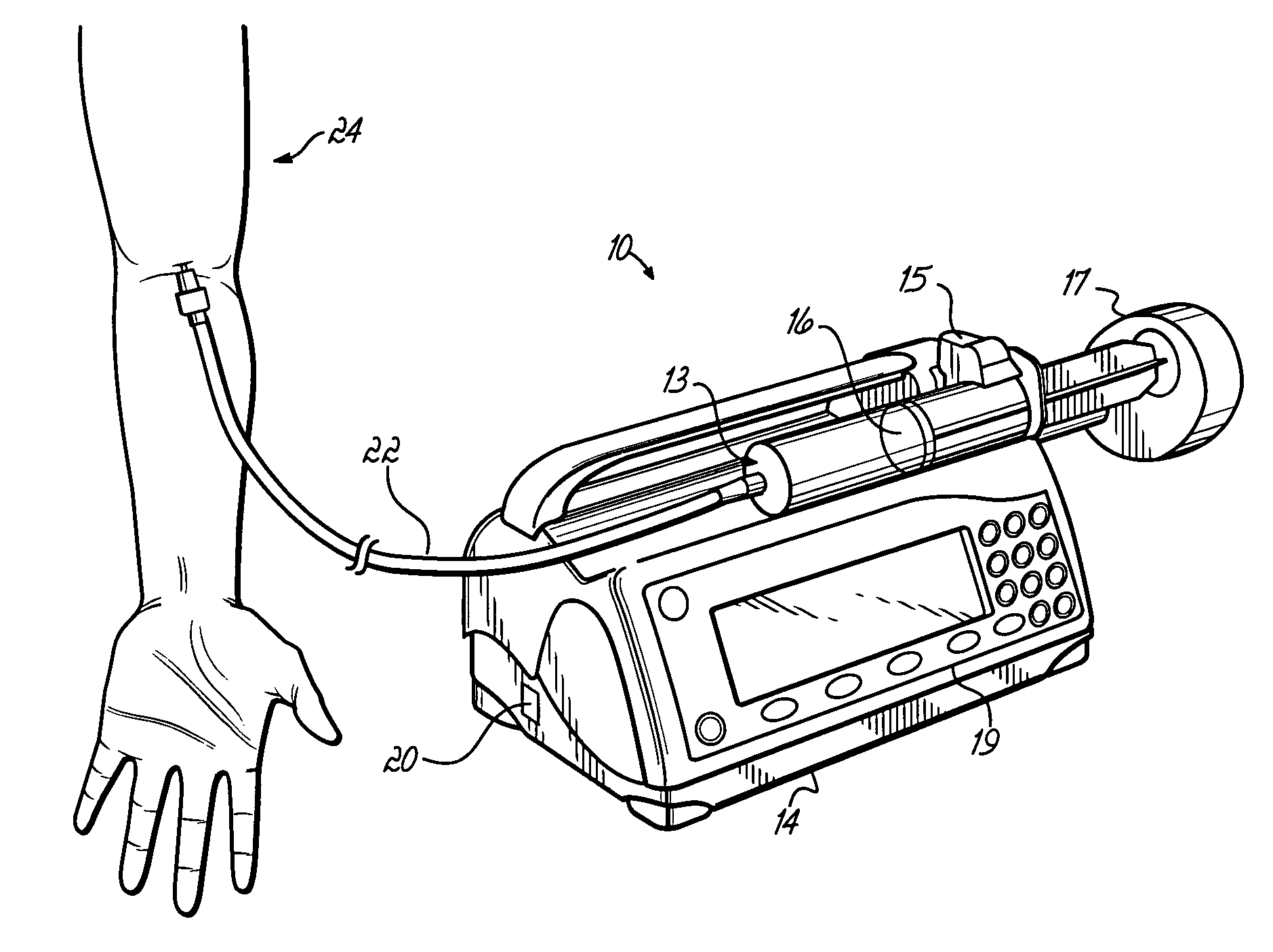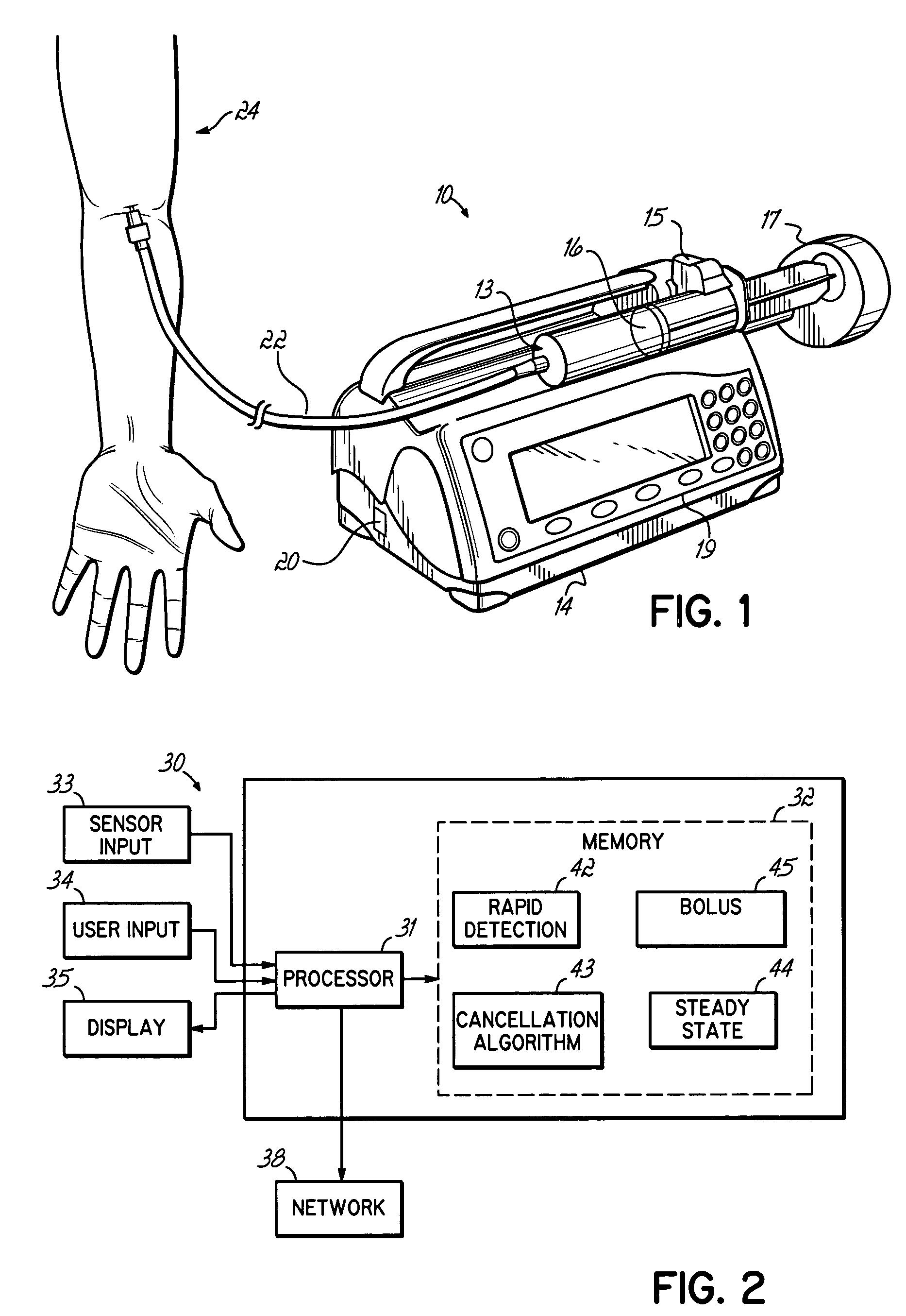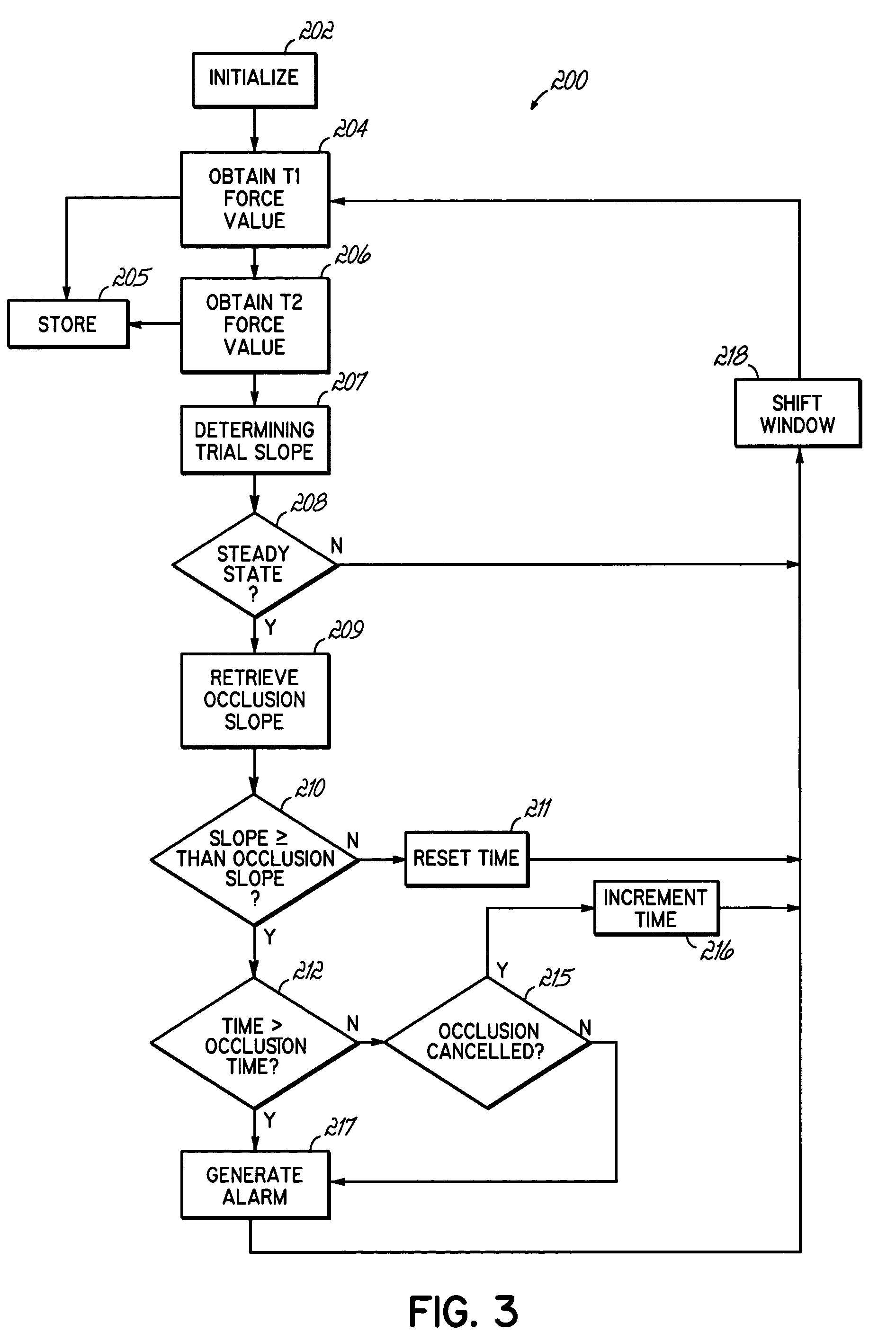Syringe pump rapid occlusion detection system
a detection system and syringe technology, applied in the direction of positive displacement liquid engines, process and machine control, instruments, etc., can solve the problems of more costly pumping systems, medication is not delivered to patients, and patients are injured, so as to reduce the incidence of false occlusion and reduce the infusion rate
- Summary
- Abstract
- Description
- Claims
- Application Information
AI Technical Summary
Benefits of technology
Problems solved by technology
Method used
Image
Examples
Embodiment Construction
[0025]FIG. 1 shows an exemplary syringe pump system 10 configured to automatically detect an occlusion. The system 10 shown in FIG. 1 includes a pharmaceutical cartridge, or syringe 13, which is supported on and secured by housing 14 and clamp 15, respectively. The syringe 13 includes a plunger 16 that regulates the flow of fluid to a patient 24 via infusion line 22. That is, the plunger 16 comprises a piston-type drive mechanism that is internal to the housing 14 and urges the fluid contents out of an outlet of the syringe 13 along the infusion line to the patient 24.
[0026]To this end, a motor internal to the housing 14 actuates a pusher, or plunger driver mechanism 17, to move the plunger 16. A sensor, which is typically internal to the plunger driver mechanism 17, monitors fluid force as desired per system specifications. The pump housing 14 may additionally include a display 19 and a communications port 20. A typical display 19 may include operator interface input mechanisms, su...
PUM
 Login to View More
Login to View More Abstract
Description
Claims
Application Information
 Login to View More
Login to View More - R&D
- Intellectual Property
- Life Sciences
- Materials
- Tech Scout
- Unparalleled Data Quality
- Higher Quality Content
- 60% Fewer Hallucinations
Browse by: Latest US Patents, China's latest patents, Technical Efficacy Thesaurus, Application Domain, Technology Topic, Popular Technical Reports.
© 2025 PatSnap. All rights reserved.Legal|Privacy policy|Modern Slavery Act Transparency Statement|Sitemap|About US| Contact US: help@patsnap.com



